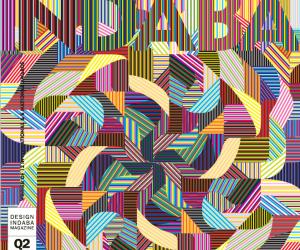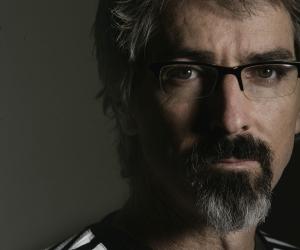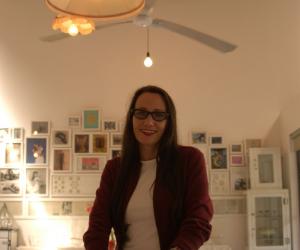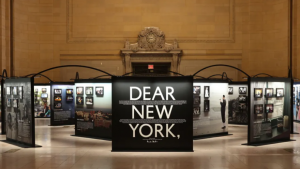First Published in
Richard Hart is not an easy person to interview. He’s reluctant to talk about his own work, refuses to offer justification, resists interpretation, shies from the attention and is self-deprecating and apologetic on the whole.
“I did a painting a number of years ago that somehow evolved into a lady with a dress that had a pocket with a fox. I let it be for a while, but it stuck with me and somehow it blossomed into a full-blown body of work. That’s about as deep as it gets I’m afraid,” he dismisses my initial attempts to talk about his exhibition Kind Pockets.
Admittedly, the exhibition does have a standard motif of a teenage girl wearing a dress that has an animal in it. Comprising about 24 oil paintings, four lithographic prints and 18 sculptures, the exhibition also includes five dresses designed by Amanda Laird Cherry and some ethereal photos of these fashion items by Roger Jardine.
It’s odd, I’ve spoken to the Durban designer informally before and he’s never come across as insecure – after all, he’s been the cover boy of ID magazine. But then I get it: It’s because we’re talking about his art and, unlike his established 12-year design career at the helm of Disturbance Design, he has just recently held his debut solo exhibition at Cape Town’s Whatiftheworld, standing in line with all the other freshly graduated punters.
“Image-making for a client and for a brief, which is ultimately disposable, is very different to painting something that is intended to stay around for years and years, and exist in its own right,” he expounds in one of his more forthcoming moments. But he quickly swerves onto his back foot again: “I have always leaned towards tight work in my illustration. In the end I was a little disappointed that I hadn’t taken advantage of the freedom of movement that painting allows. Because I have gained an appreciation for painting through the process, I can see how far I’ve got to go to be a proper painter.”
Hart invested almost three years into the body of work, taking a three-month sabbatical from Disturbance for the final sprint. “To be honest, at the time, I was flirting with the idea of art becoming my livelihood and leaving the design world behind. But at the end of those three months I was really thrilled to get back to my studio and design job,” he again gets more talkative as the conversation returns to design. “The obvious differences are that art is essentially created for an audience of one and it doesn’t need to do or be anything other than itself, whereas good design has a function to add something to people’s lives or contribute in some way – and I really like the honesty of that,” he asserts.
As I inch the conversation back to the exhibition, Hart starts floundering again. I offer him triggers – birth metaphors, totem animals, expression of self, a lost youth, emotional baggage, the cute aesthetic, art as mystification, teens as metamorphosis, autobiography… “Not many people know that I was brought up in the pouch of a kangaroo”, he laughingly dismisses it all. “But I guess there is a lot of personal input in terms of things that have been influential to me in an artistic and cultural way – particularly in the names of the paintings and stuff. So it is quite a personal show, although even the most knowledgeable person wouldn’t get a lot of the things I put in. And they’re not meant for other people, they’re meant for me.”
I roll my eyeballs at the self-indulgence – we’re on Skype, so we can’t see each other, but no doubt the artist in turn rolls his eyeballs at the journalist’s insistence on motivation. “I’m quite happy to just put things out there and let people make their own interpretations. I haven’t attached my own meaning. But I did hope to put enough into it, to take it beyond just being empty paintings of pretty girls,” pleads Hart.
But what then, I demand, did he put into it? We’re exasperated after an hour’s tussle. He sighs: “The presence of the animal in the pouch creates some kind of tension. There’s a bond between the girl and her animal, and an exclusion of the world outside of them. I think I’ve always liked the idea of companionship and being glued to each other, and two beings being one. To me they seem very content in their own little universe. That might have something to do with being a teenager and not really being part of the world.”
It’s no victory, we both feel cheated – “I had hoped that meaning could be attached without me having to spell it out,” Hart admonishes. I feel reprimanded and revisit the catalogue. There is a magical calmness and safety that the work envelops me in, as though I’m resting my head on someone’s shoulder. I rewind my dictaphone and find the key, five-minutes into the interview – I had missed it.
Right between “that’s as deep as it gets” and “I don’t know what my work means”, Hart understates: “I hope that the work imbues a sense of emotion. Because that’s the type of work that I like – work that evokes something in me, whether it is negative or positive, it stirred something in me. I really feel strongly that if you do something with honesty, there’s no place for affectation.”


















